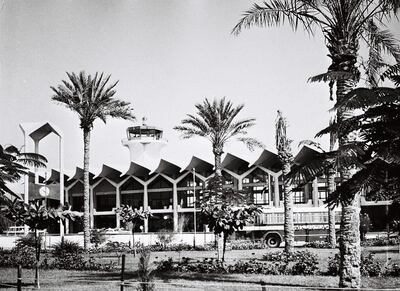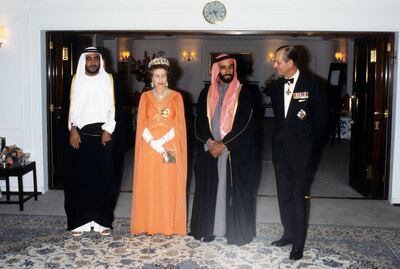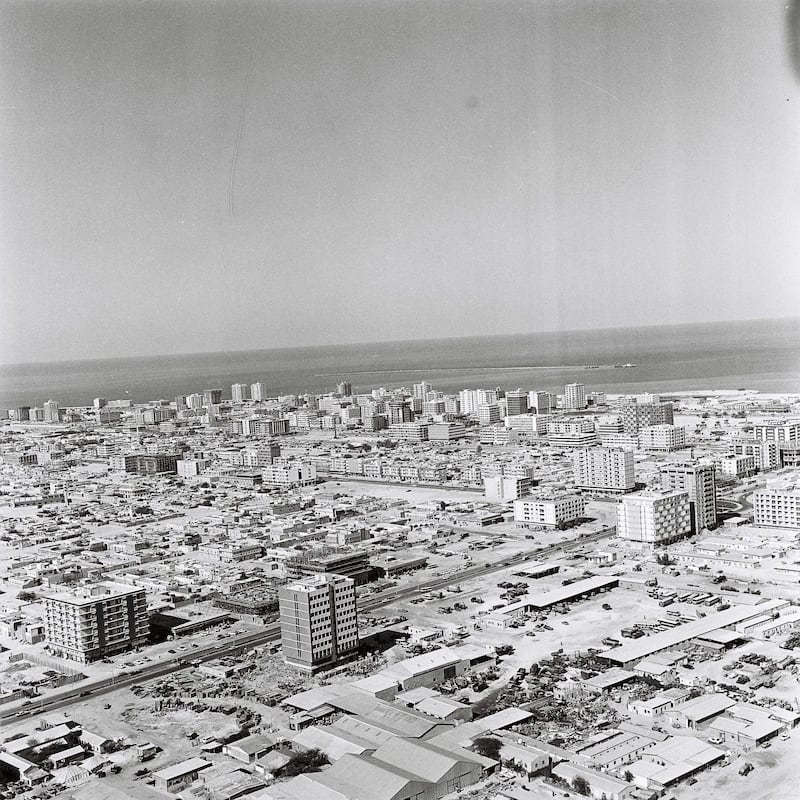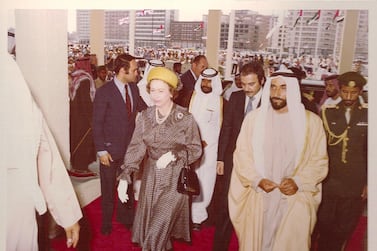On the morning of February 24, 1979, Queen Elizabeth II arrived in Abu Dhabi on the royal yacht Britannia.
But how would a regular visitor to a country just a few years old have fared?
Al Bateen was then the city’s primary airport. After security, a swift affair in those days, visitors hailed a taxi or bus which motored down Airport Road, a paved dual-carriageway that in 1979 was one of the only arteries into town.
If you wanted a five-star hotel there was one choice: Hilton Abu Dhabi. The Al Ain Palace was not a five-star, while Le Meridien did not open to guests until March 1980. There were a number of other small hotels.
Back then, there were no developments on Yas or Saadiyat nor an Abu Dhabi, Al Wahda or Marina Mall – these types of shopping centres did not exist. People shopped for food at Spinneys or Abelas. Jashamals was also popular as it sold international newspapers, albeit a few days old. The souq, a labyrinthine complex of shops supplying everything from cassettes to baseball hats on Hamdan bin Mohammed Street and Khalifa Street was also popular.
If you wanted to splash out, you might grab a coffee at the Hilton. Burgers were served at a branch of Wimpys near the park opposite Al Bateen airport and small standalone restaurants also existed, with the Golden Fish on the Corniche popular for its grilled hammour and lettuce salad. You could pull up a chair at a side-street cafe and and drink sweetened tea.

On Fridays, which was the weekend then, one might have frequented The Club, a private member’s facility by Mina Zayed, or the Hilton. Others packed a cool box and took a boat to one of the islands, such a Saadiyat.
Tourist Club, an entertainment centre beside Le Meridien, was also a hot spot, but lots of entertaining was done at home.
“Life was more intimate, more do-it-yourself,” says long-term British resident Nick Cochrane-Dyet.

Emirates News was the daily English newspaper in Abu Dhabi and it cost Dh1. Gulf News, which is based in Dubai, was also available and Arabic readers enjoyed Al Ittihad. Abu Dhabi Radio, the voice of the UAE from Abu Dhabi, had a medium wave service on MW370 featuring news, features and comedy. From In February that year it also offered a service in Urdu and French.
Abu Dhabi TV broadcast for a few hours a day, while readers of a certain vintage might recall watching cartoons on a flickering Channel 33 broadcast from Dubai.
If someone needed to fill their car up after hours, ten 24-hour filling stations operated across the city, while two late-night pharmacies were open on Hamdan Street.
Anyone returning to the capital today will find a city transformed. Al Bateen was replaced as the main airport by Abu Dhabi International in 1982. The souq burnt down in 2003 and was replaced by the World Trade Centre Mall. Wimpy's is now a KFC and Abu Dhabi Radio no longer exists but the mast is still standing, rusting and obscured by trees on the Corniche where Spinney’s Khalidiya sits today.
Not many people take boat trips to Saadiyat anymore – they just drive over the Sheikh Khalifa Bridge. The actual Tourist Club is gone, too, but visitors might be cheered by the strange persistence of its name. Despite the best efforts of authorities to rename the neighbourhood around it Al Zahiyah, Tourist Club stubbornly lingers on. It's a gentle reminder of lives lived, good times had and the ghosts of an Abu Dhabi past that refuse to drift away.








